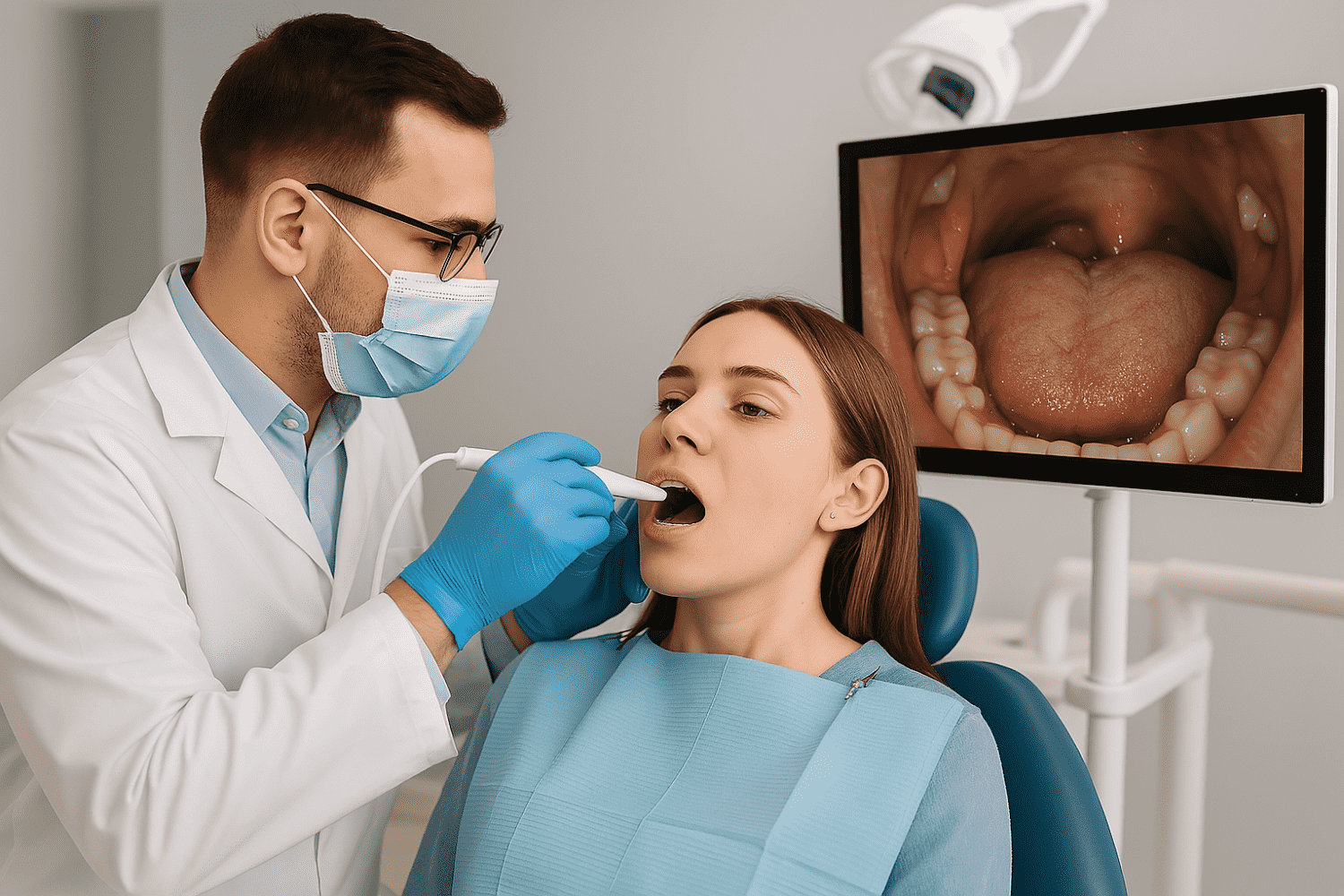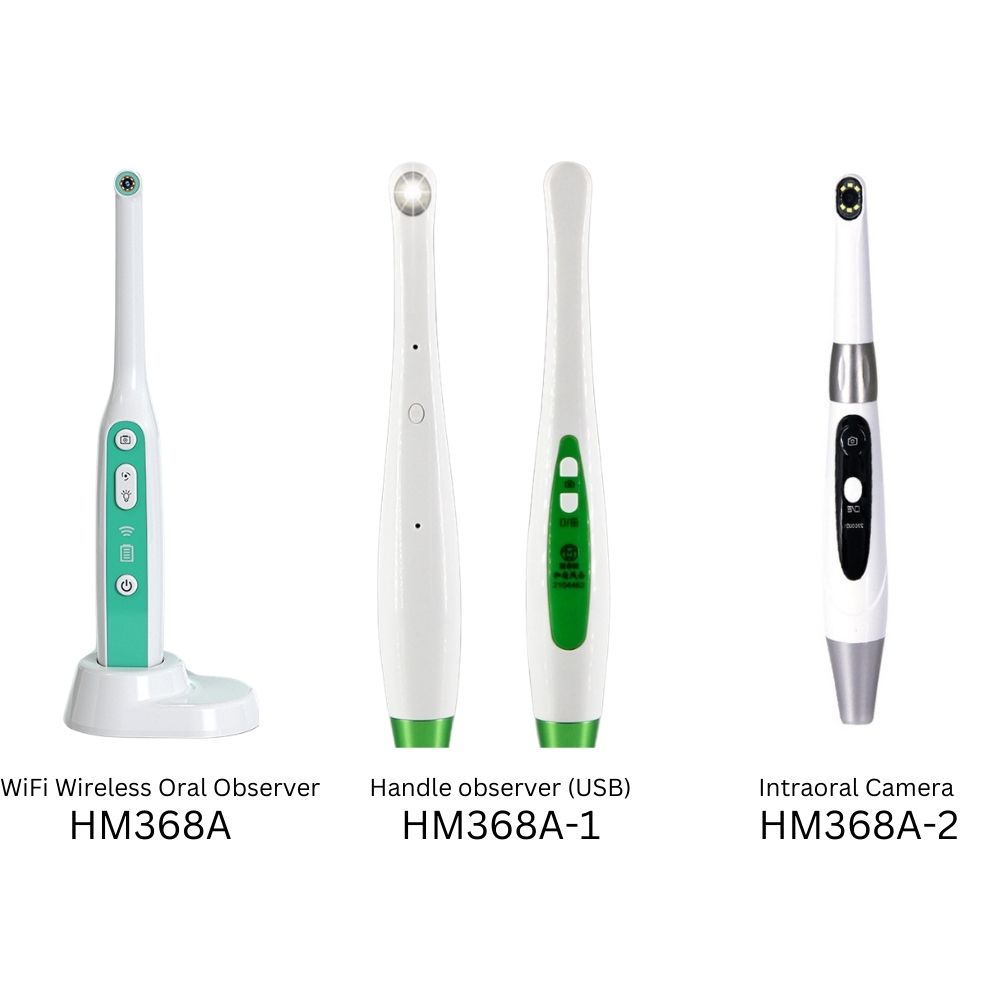In modern dental practices, the dental intraoral camera has become an indispensable tool. It provides dentists with high-resolution images of the inside of the mouth, helping them make more precise diagnoses and improving the patient experience by reducing anxiety. However, as a precision device, the proper maintenance and care of the intraoral camera are crucial to ensure its long-term functionality. In this guide, we will provide you with a comprehensive dental intraoral camera maintenance plan, helping dental practices keep the device running efficiently, extend its lifespan, and improve the quality of care.
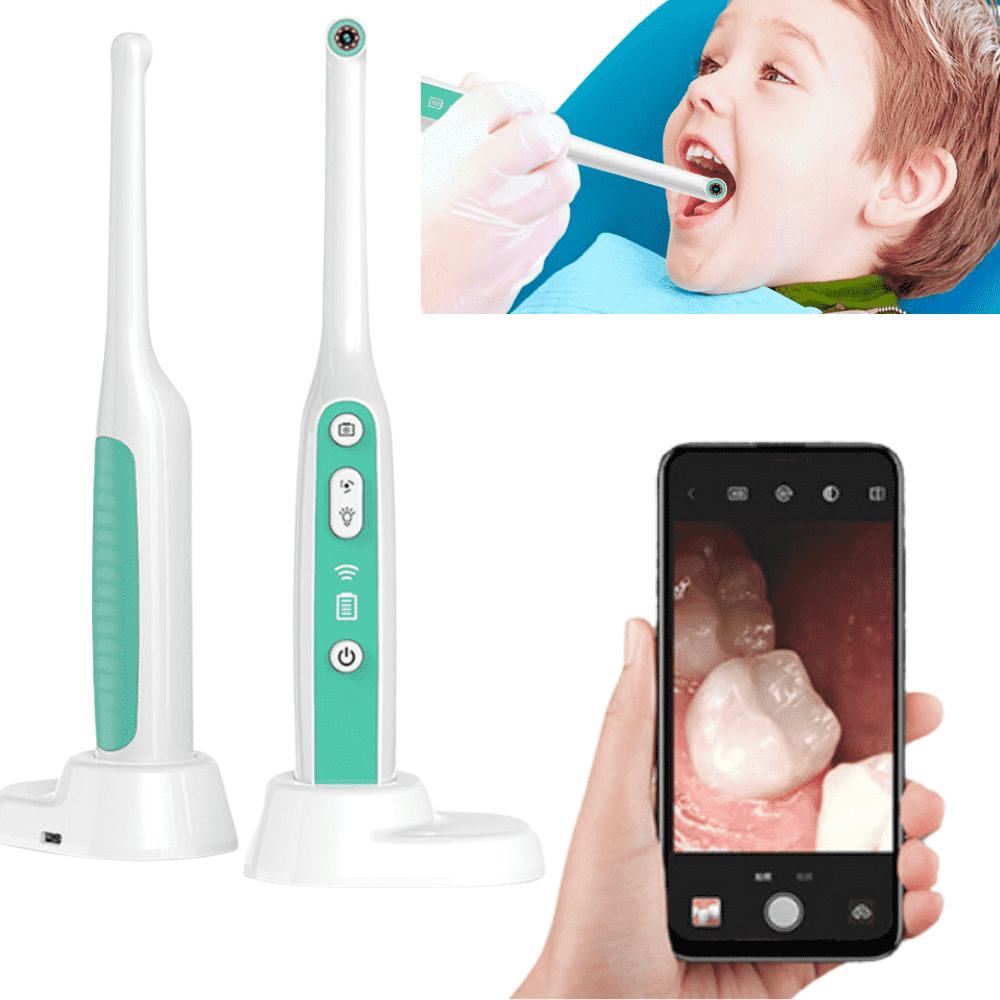
1. Common Components and Working Principle of Intraoral Cameras
To better understand the maintenance needs of the intraoral camera, it's important to first know its key components and how it works:
Lens and Image Sensor: These are the core components of the dental intraoral camera. The lens captures images of the inside of the mouth, and the image sensor converts those images into electronic signals. The cleanliness of the lens and the quality of the sensor directly affect image quality. Therefore, regular cleaning and maintenance of the lens and sensor are crucial.
Display and Storage System: These components display the captured images in real-time and store the patient’s treatment records. Ensuring the display is clear and the storage system is reliable is important for the diagnostic process.
Lighting System: The lighting system provides the necessary illumination for the camera. The quality of the light affects the clarity of the images, so checking and maintaining the light source is essential.
According to a study in the Journal of Clinical Dentistry, high-resolution images provided by intraoral cameras help dentists make more accurate diagnoses of oral diseases such as cavities and periodontal issues, improving early diagnostic accuracy.
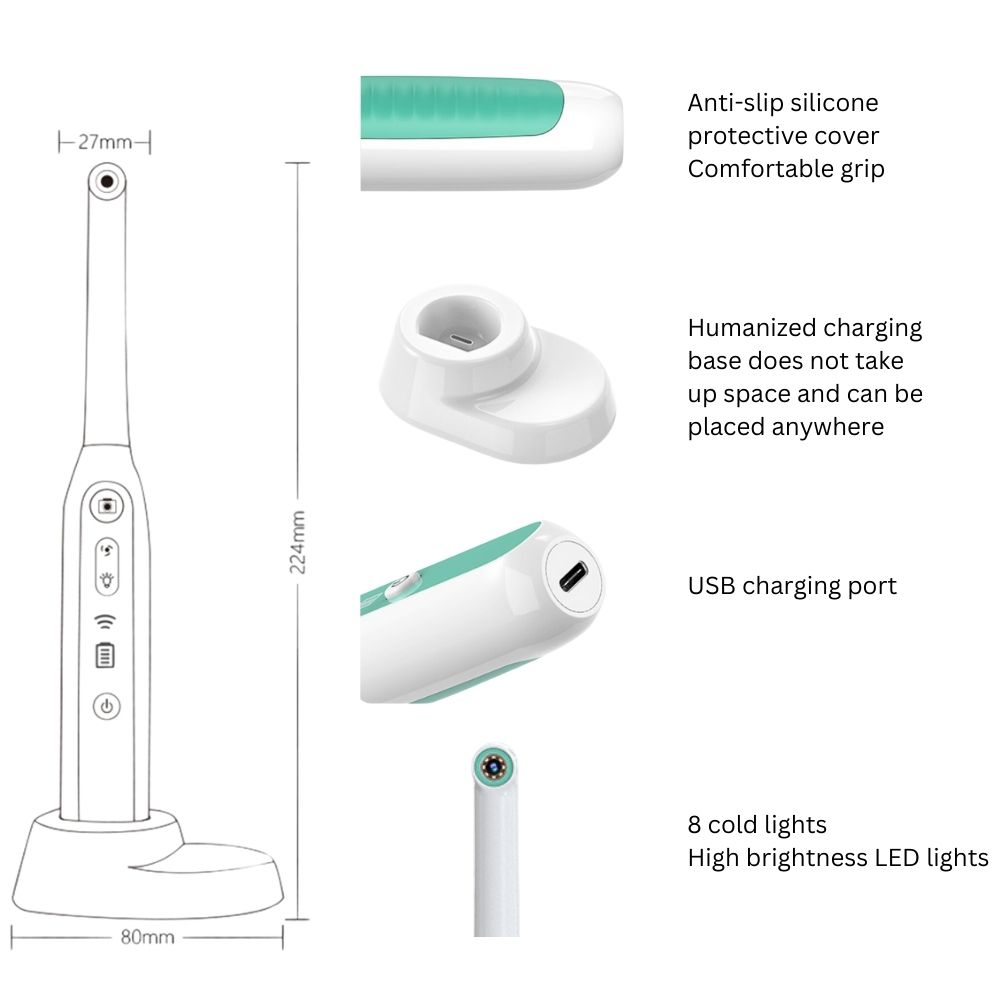
2. Regular Cleaning and Disinfection
Since the intraoral camera comes into direct contact with the patient's mouth, proper cleaning and disinfection are essential to prevent cross-contamination and to ensure the device’s longevity.
Cleaning Tools and Steps: Use a non-abrasive cloth and a neutral cleaning agent to gently wipe the camera’s lens and other surfaces. Avoid using alcohol-based or solvent-containing cleaning products that could damage the device’s casing.
Disinfection: After each use, the dental intraoral camera should be thoroughly disinfected using appropriate disinfectants like hydrogen peroxide or chlorhexidine. Ensure that the camera is free of bacteria and viruses before storing it. Allow the disinfectant to dry completely before the next use.
Precautions: Avoid using overly harsh chemicals to prevent damaging the device’s exterior or lens. Regularly inspect the camera to ensure there is no accumulation of dirt or bacteria.
According to the Centers for Disease Control and Prevention (CDC)'s Dental Infection Control Guidelines, all medical instruments that come into contact with a patient’s mouth, including intraoral cameras, should undergo thorough cleaning and disinfection to prevent cross-contamination.

3. Device Checkups and Maintenance
Regular inspections and maintenance are critical for ensuring the intraoral camera operates smoothly for the long term.
Routine Inspections: Check the device weekly or monthly to ensure the lens is clear, the display works properly, and the lighting system is functioning as expected. Inspect all connections for looseness or damage.
Calibration: Periodically calibrate the dental intraoral camera to maintain accurate and clear images. Some devices come with automatic calibration features, which allow users to optimize image quality easily.
Battery and Power Management: Properly manage the camera's battery to avoid overcharging or discharging it excessively. Regularly check the battery’s health, and replace it if necessary, to ensure the device always operates at peak performance.
According to a study published in the Journal of Dental Science, regular maintenance and calibration of intraoral cameras improve diagnostic accuracy, reducing image blurriness and lighting issues.
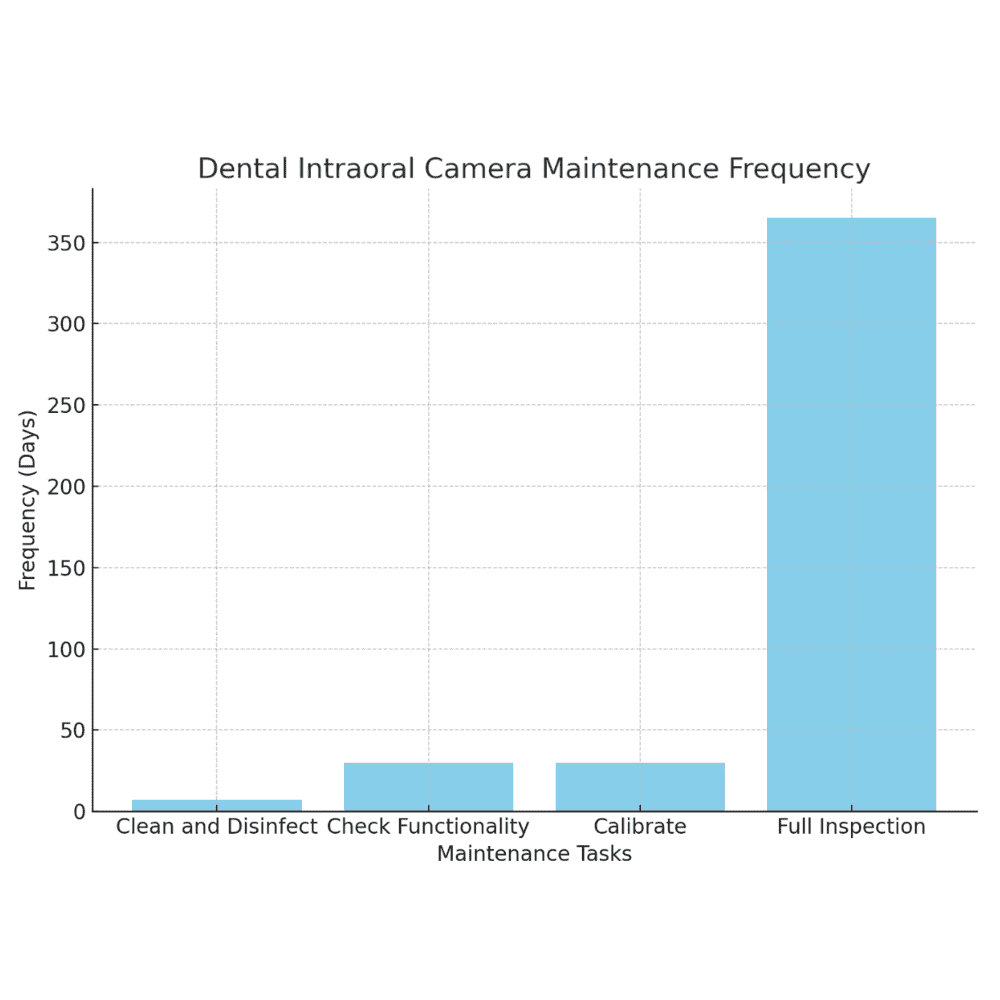
4. Storage and Transportation
Proper storage and transportation practices can help extend the lifespan of the dental intraoral camera and prevent damage.
Storage Conditions: Store the camera in a dry, temperature-controlled environment, away from direct sunlight and high humidity. Using a protective storage case can help prevent the device from physical damage.
Transportation Recommendations: When transporting the intraoral camera, use protective packaging, such as soft padding or specialized cases, to shield it from impact and prevent damage. This is particularly important for long-distance transport.
A study in the Journal of Medical Devices highlights that proper storage and protective packaging significantly reduce the risk of device damage, especially during transportation.
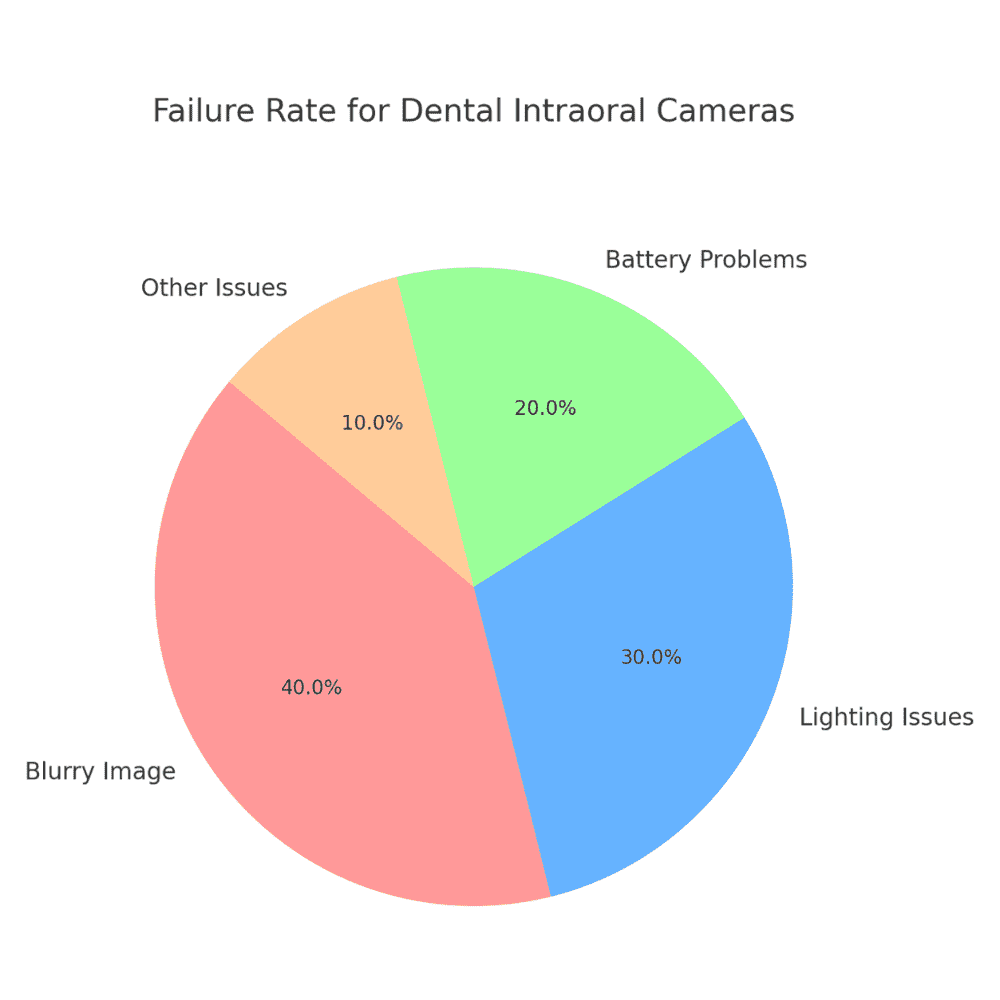
5. Professional Repair and Technical Support
Even with careful maintenance, the intraoral camera may encounter issues due to prolonged use. Therefore, partnering with a reliable repair service and scheduling regular checkups are necessary.
Regular Maintenance and Inspections: It’s advisable to work with the device supplier or professional repair services to conduct regular inspections and maintenance. This helps identify potential issues early and allows for prompt repairs to avoid device failure.
Common Problems and Solutions: Common issues with intraoral cameras include blurry images and insufficient lighting. When these issues arise, contacting technical support promptly will ensure the camera is restored to optimal performance.
Suppliers and Service Contracts: Choose a trusted supplier and enter into a service contract to ensure timely repairs when needed, minimizing downtime and device failure.
According to the Dental Technology Journal, professional maintenance and regular servicing can greatly extend the lifespan of intraoral cameras and reduce diagnostic delays caused by equipment failure.
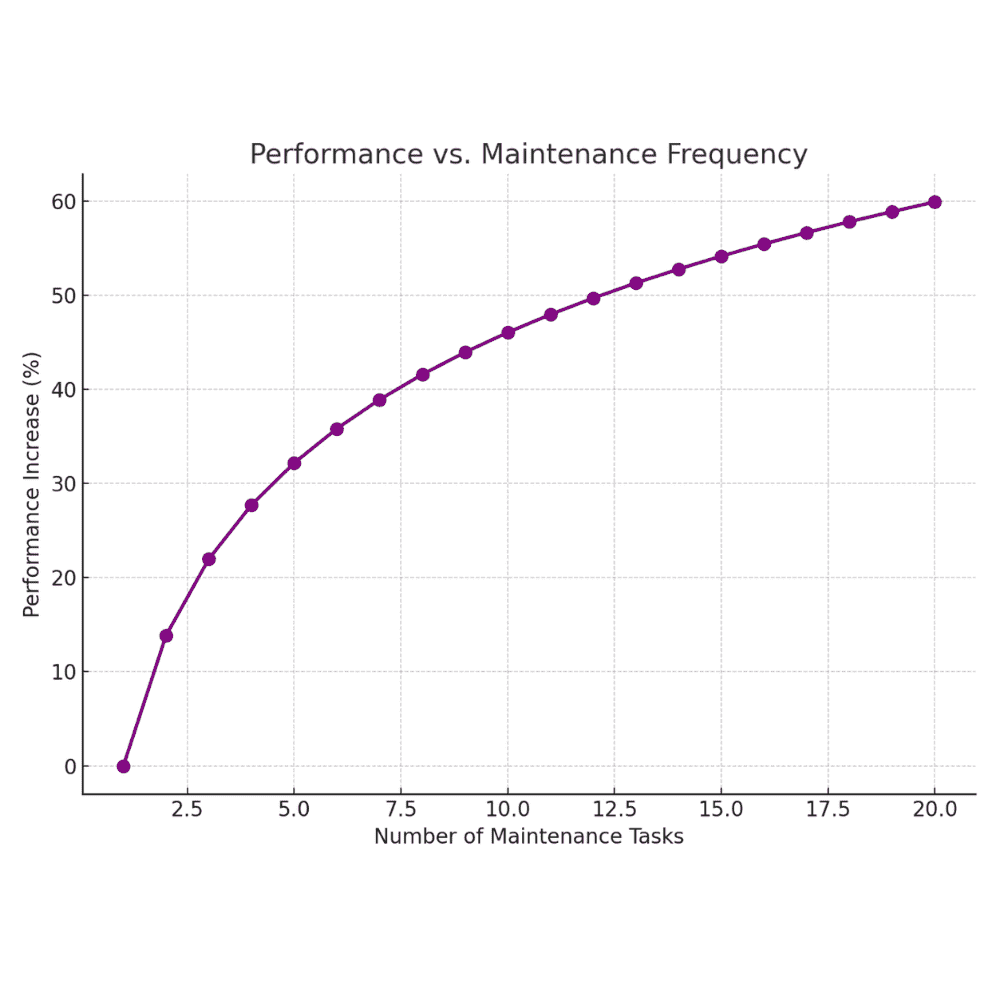
6. Operator Training and Precautions
The maintenance of the camera also depends on the skill of the operator. Proper training is essential for using the intraoral camera effectively.
Operator Training: Regular training sessions for dental staff on how to use and maintain the dental intraoral camera will ensure they are familiar with correct cleaning methods and device operation, which increases the camera’s lifespan and efficiency.
Common Mistakes and Prevention: Common mistakes include using excessive force when cleaning the lens or neglecting battery management and regular inspections. Through proper training and standardized procedures, these issues can be minimized.
A study published in the Journal of Dentistry for Children found that well-trained dental staff are more effective at reducing operational errors, leading to improved camera efficiency and longevity.
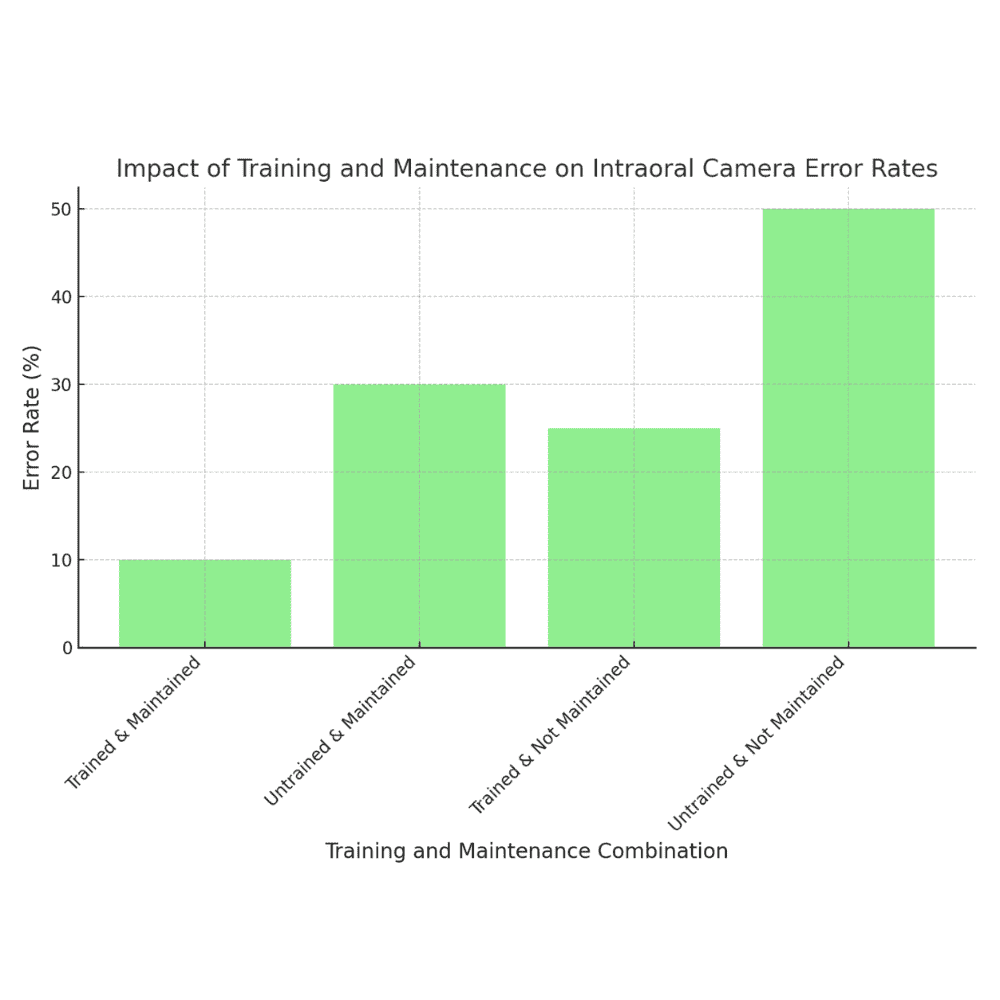
Conclusion
The dental intraoral camera is an essential tool in modern dental practices, directly influencing diagnostic accuracy and patient experience. Proper maintenance and care not only extend the device’s life but also enhance treatment outcomes and diagnostic precision. Dental practices should conduct regular checkups, cleaning, disinfection, calibration, and maintenance, as well as provide ongoing training for their staff. By implementing these practices, you can ensure that your intraoral camera remains in optimal condition, providing accurate, safe, and efficient care for your patients.
B&D Intraoral Camera Product Recommendation
To help dental practices improve efficiency and enhance patient experience, B&D offers a high-quality Dental Intraoral Camera that combines excellent image quality with convenient USB connectivity. With a 10-megapixel high-resolution camera, it ensures you can clearly view every detail inside the mouth, while its compact design guarantees patient comfort. One of the most attractive features is its highly competitive pricing. Compared to other similar products on the market, B&D's intraoral camera offers exceptional value, allowing dental practices to save costs without compromising on quality. This makes it a great choice, especially for those on a budget. If you want to learn more about B&D's intraoral camera or get a quote, visit our website or contact our sales team today. Choose B&D for high-quality, high-performance, and affordable intraoral cameras that will enhance your diagnostic and treatment services.


